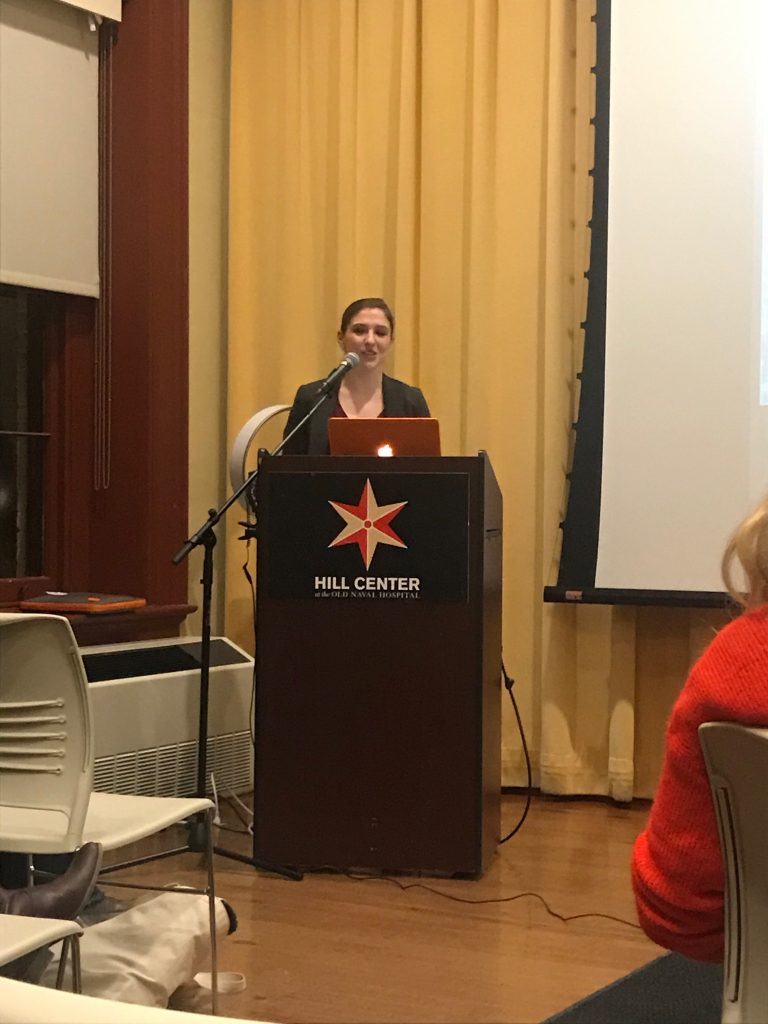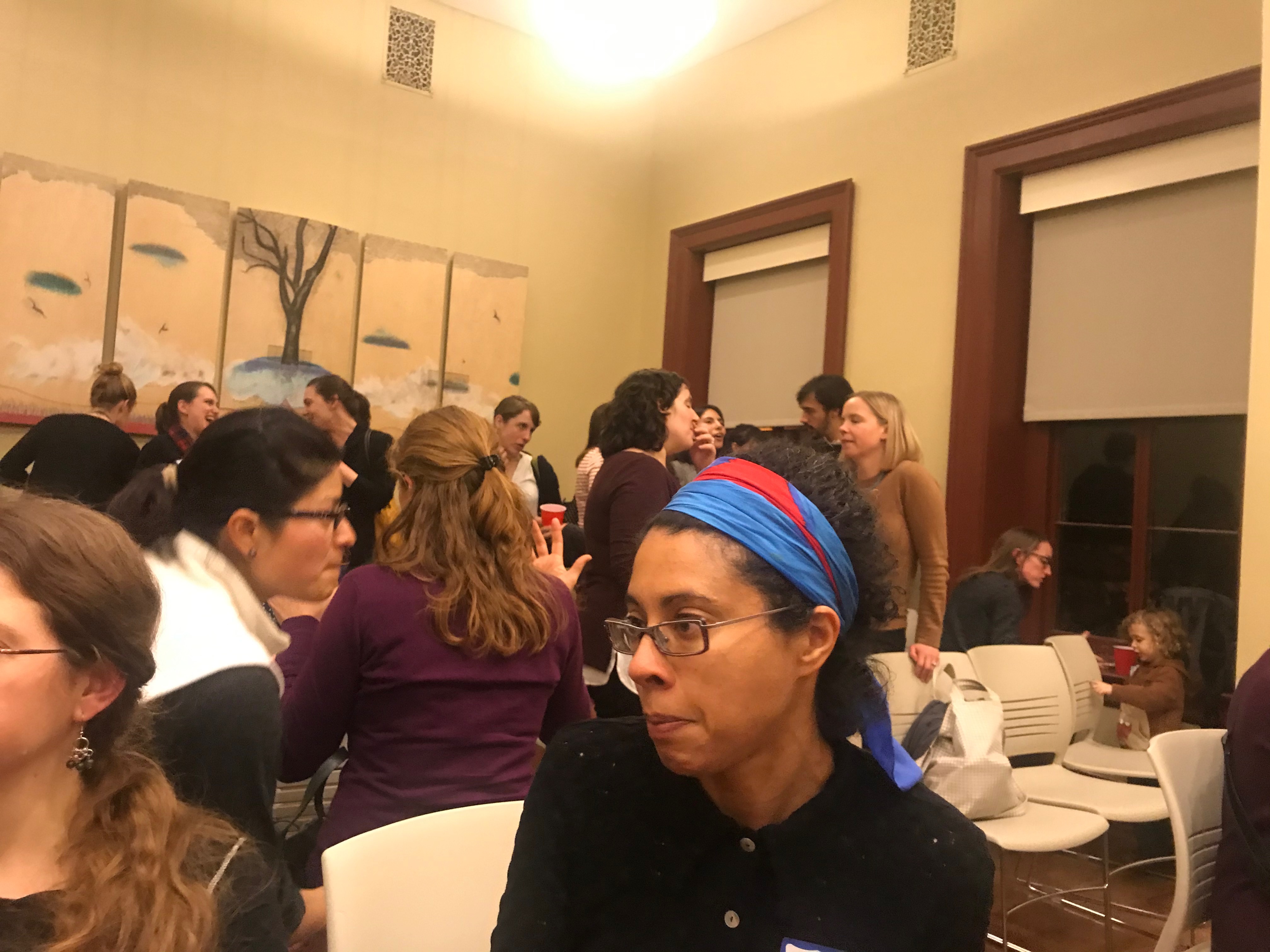“White House: Conservation Efforts Past and Present”
Dr. Lindsay Chervinsky, Historian for the White House Historical Association
The Hill Center located at 921 Pennsylvania Ave SE, Washington, DC 20003
5 December 2019
Attendance: (approximately) 45

At the Washington Conservation Guild’s December meeting of the 2019/2020 season, Dr. Lindsay Chervinsky, historian for the White House Historical Association (WHHA), discussed the preservation of the material culture heritage of the White House.
Dr. Chervinsky spoke about the preventive conservation and preservation of the White House public rooms, conservation treatments of historic furnishings and artwork, and future conservation projects at the White House.
Dr. Chevinsky began her presentation with an introduction to the history and mission of the WHHA which was founded in 1961 by First Lady Jacqueline Kennedy. The mission of the WHHA is to preserve the historic elements of the White House and to make the breadth of the American experience accessible to the American people.
The educational component of the WHHA has expanded substantially since its founding. The visitor experience of the White House now includes a guide book with introductions to the White House, the White House rooms and the decorative art pieces in each room. In addition, the WHHA leads several teaching institutes every summer which aim to educate and explore all aspects of the White House’s history. The education component also highlights research and scholarship from historians.
Conservation plays a major role in preserving the material culture heritage of the White House. During the Carter Administration, the exterior of the White House was cleaned in which 45 layers of paint were removed to bring out the details of the doorway. Since then, architectural preservation is an ongoing effort to maintain the exterior of the White House in the unfriendly D.C. climate.
What does it mean to have a robust American experience? This is a question that is interwoven with the WHHA’s mission to conserve American memory. Art intends to reflect the entire country in terms of its people, its scenery and its major moments. With that in mind, Dr. Chevinsky emphasized the WHHA’s efforts to maintain and expand the White House collection to include artists who are representative of the American people. However, these efforts are not without its challenges.
The White House is not a traditional museum as it is also a space that serves multiple functions. According to Dr. Chevinsky, the protection of the artwork while maintaining the White House as a functional space is one of the major preservation challenges of the White House curators. The preservation of the White House public rooms are examples of how the WHHA works with experts to address these conservation challenges. In the Red Room, the original furnishings are often replaced by historically accurate pieces that are similar and sturdier for use. In the Bellange Suite, ten pieces of the original furnishings are now back in the White House as a part of the reacquisition efforts of the 1960s (the original furnishings were sold in the 1860s because they were considered too ornate at the time).
The WHHA used historically accurate methods in the restoration of the Bellange Suite. The WHHA staff worked closely with experts in Baltimore to ensure the same nineteenth century linens and hand stitching method were used in the restoration of the suite’s furnishings. The WHHA also worked with French experts when replacing the silk materials of the furnishings. Even the exact amount of horsehair used in the cushioning were used in order to match the records left by James Monroe.
Dr. Chevinsky discussed the future projects of the WHHA at the end of her presentation. These projects include replacing the lantern in the North Portico next year and repairs of a fire screen for the Blue Room which the White House curators will oversee. In addition, some of the furniture in the Red Room will be reupholstered to match the red paneling that was installed last year. The WHHA also hopes to fund the conservation treatment of fifteen paintings in the White House collection through their partnership with the Smithsonian. The WHHA will continue to acquire art, whenever possible, and commission a new set of president and first lady portraits.
Dr. Chevinsky’s book, The President’s Cabinet: George Washington and the Creation of an American Institution will be published by Harvard University Press in April 2020.
Summarized by Tammy Ying Hong, Andrew W. Mellon Artist Materials Intern at the National Gallery of Art
